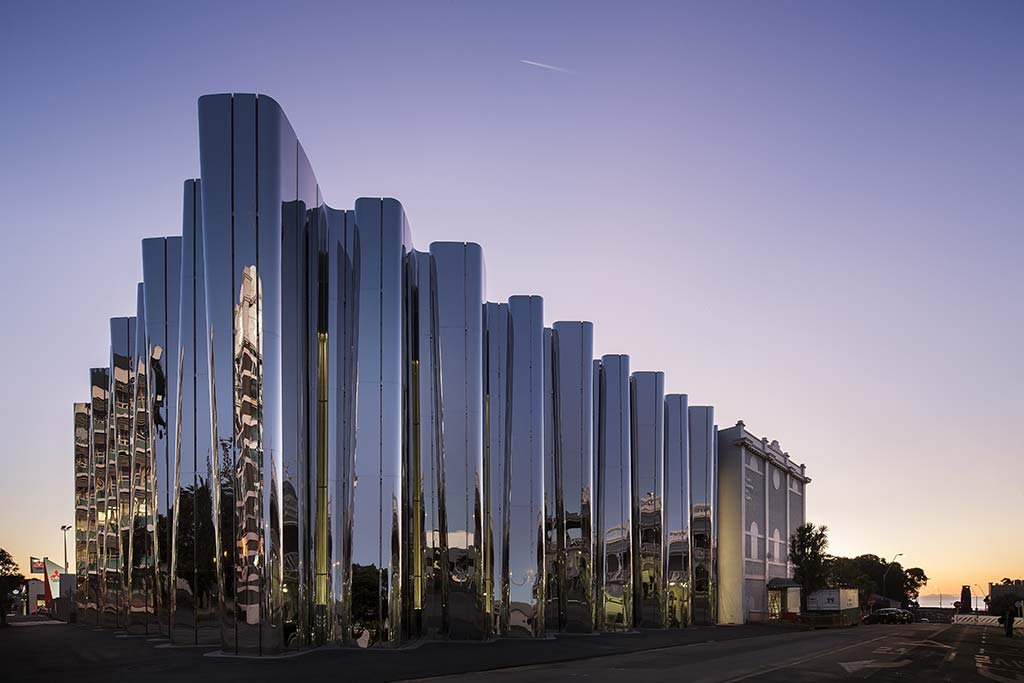
Project Details:
Location: New Plymouth, New Zealand
Type: Cultural – Public
Built-up Area: 2000m2
Site Area: 3600m2
Architects: Patterson Associates
Project Team: Andrew Patterson, Andrew Mitchell, Daniel Zhu, Caleb Green, Joanna Aitken
Photographs: Patrick Reynolds
“Great art and architecture go together 50/50” – Len Lye
This project’s design was informed by the ideas of kinetic artist Len Lye, (born New Zealand 5 July 1901 – died New York, 15 May 1980), with particular regard to his views on the relationship between art and architecture.
“The building is conceived of as an anthropomorphic temple but in the Polynesian tradition of a Wharenui (meeting house) with an identity in itself. We hope this perception enables the art placed in it to manifest in the same way.
– Andrew Patterson.
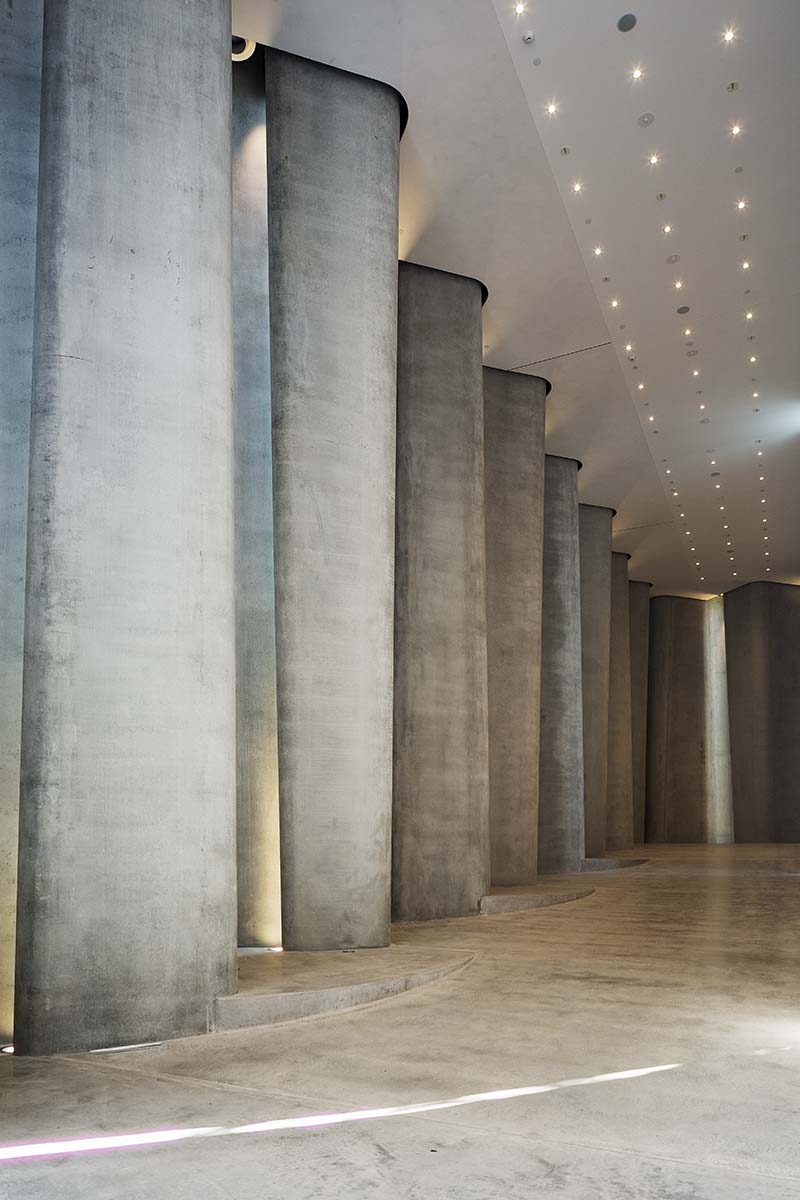
The museum is sited in New Zealand on the highest point in New Plymouth’s town centre; the new building respectfully links into a smaller existing Govett-Brewster Art Gallery already occupying the land. The Govett-Brewster had been retrofitted in the 1970s from the city’s decommissioned heritage cinema and this project reconfigures it to create one circulation loop through a single facility capable of being shared, undivided, by both.
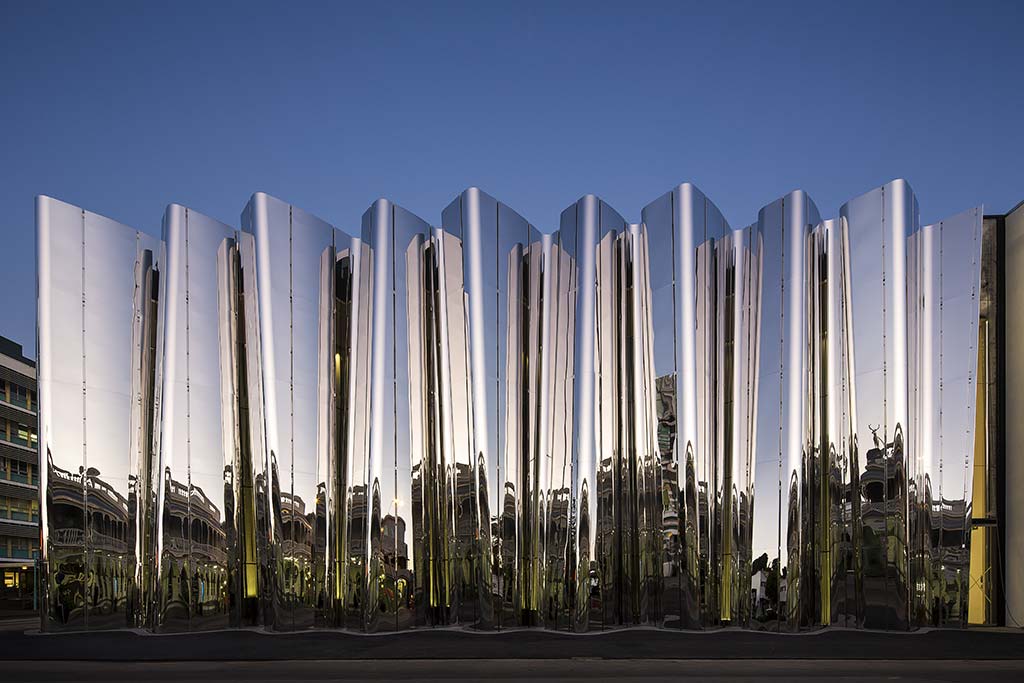
The resulting combined structure can be seen as an antipodean or ‘new world’ temple: “Rather than being designed using traditional aesthetic approaches such as ‘neo classic’ or proportioning its design, the museum has been generated by using a ‘systems’ or ‘pattern’ methodology. This means that its design process worked in a holistic way using patterns in the ecology of the project’s environment. This environment included locational, cultural and heritage attributes, as well as the physical.” – Andrew Patterson.
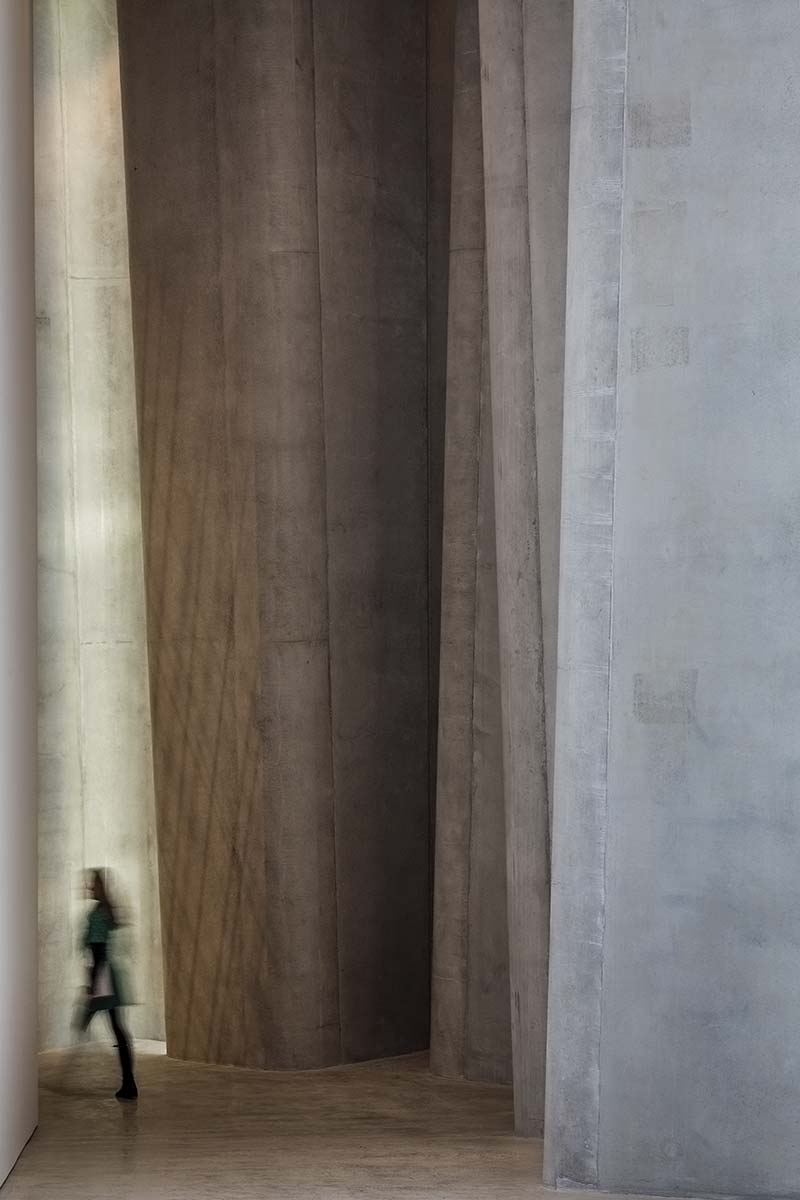
For example, the buildings most obvious ‘feature’ is its reflective stainless steel colonnade. As well as reminding the viewer of light, it showcases the area’s industrial innovation, developed as a result of its oil and gas industries. Stainless steel was Len Lye’s preferred sculptural material. So the ‘colonnades’ concept unites all these things to communicate the reason for the original collection’s bequeathing to New Plymouth.
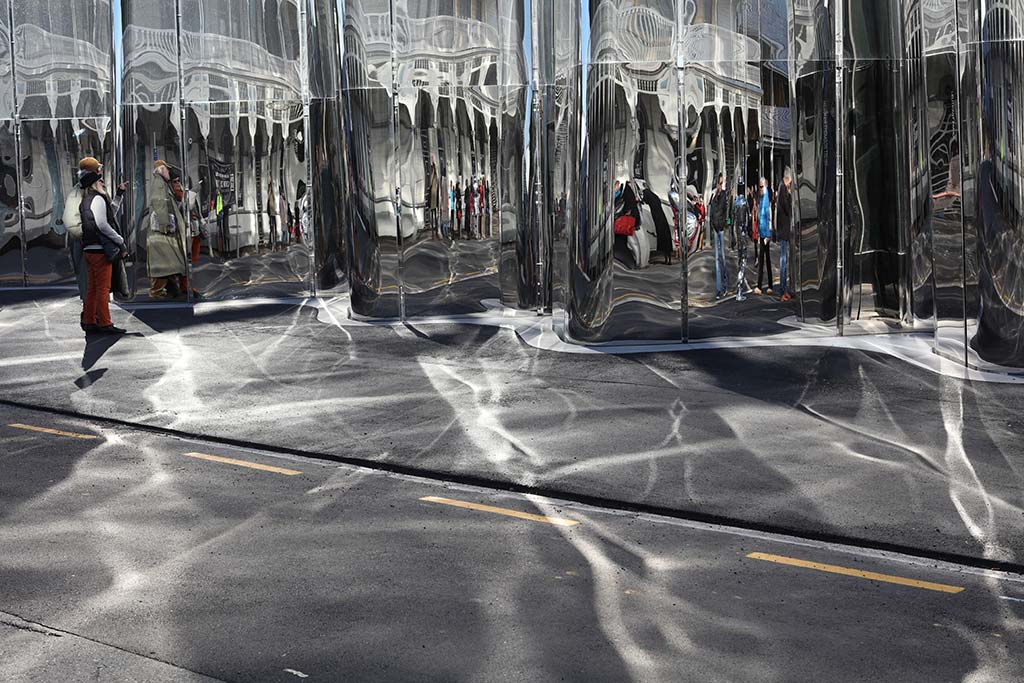
The building’s facade forms a kinetic image and has become the backdrop of choice for the region’s ‘selfie’ photographs. The glossiness of its materiality confuses modern cameras’ auto focusing mechanisms and with each photo lodged on social media it tells this story.
Once inside, the design uses the colonnade to create a sort of theatre curtain but in this contemporary temple the curtain uses three asymmetric ramped sides to form a type of ‘pronaos,’ which the centre’s large works gallery unveils as blind space. The procession of the colonnade morphs into a sort of linear or asymmetric portico to announce the main gallery as a type of primitive hall or ‘megaron.’ Common to nearly all cultures, this space is where the divinity now houses the art. Below this is a womb-like education space set into the pit of the resulting form.
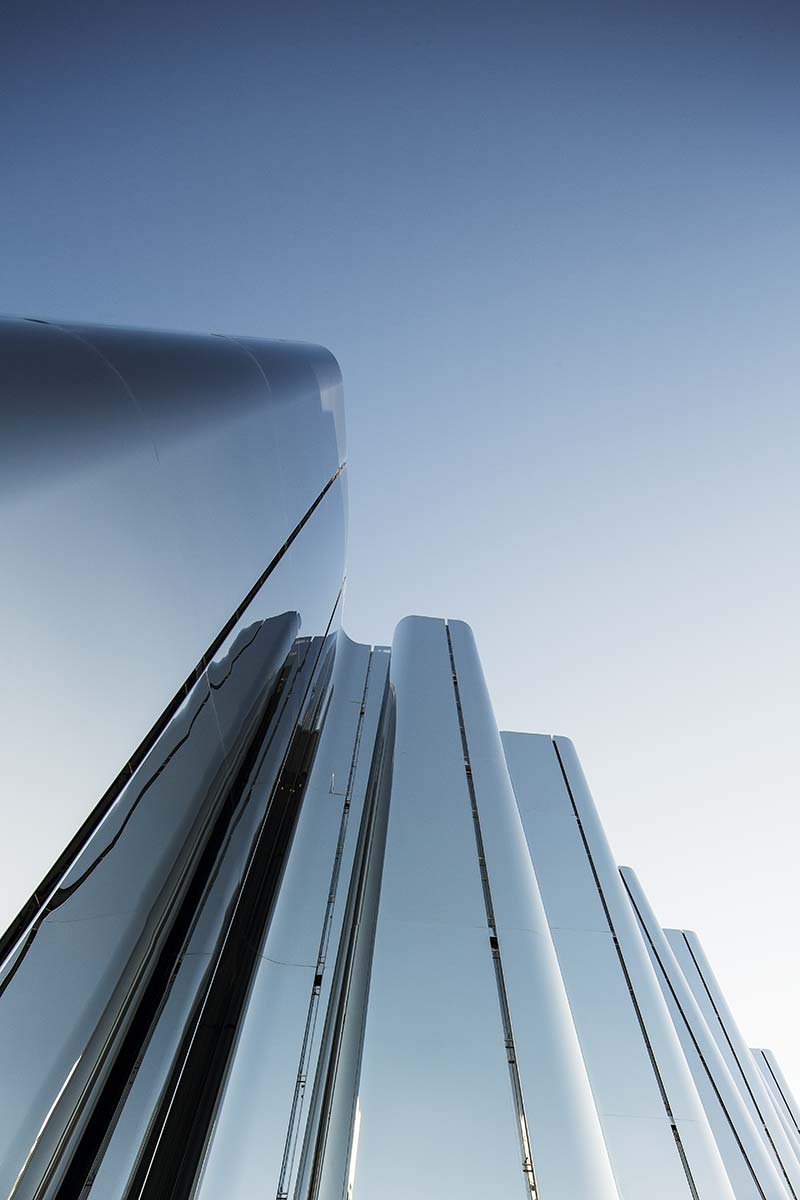
Each of the 14 metre high monolithic repeating columns surrounding it are constructed of a single precast piece of concrete. It might be an iconic ‘octastyle’ but with nine columns or a giant crinkle cut chip pattern, the columns reject formal language elements to distort the space – all that remains is the reflection of light.
An ‘adyton,’ the most hidden sacred and private part of a temple, usually found furthest from the entrance, arguably houses the Len Lye archive while a type of ‘opisthodomos’ looks back democratically to the people entering below as the building’s treasury.
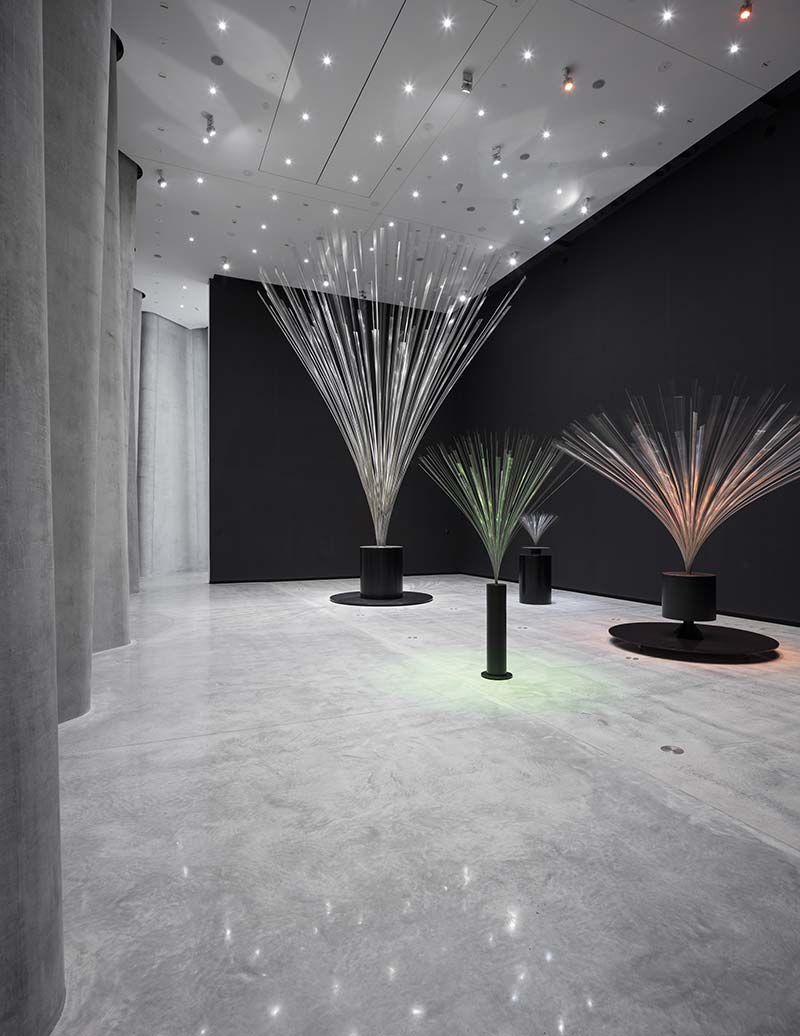
All this is in dialogue with the old Govett-Brewster building in the converted cinema, whose existing tiered galleries now form the ‘elatius’ or grand stair but here, as a kind of cinematographic exit.
The building exerts itself on the surrounding streets like a beacon. When the sun shines, tracery lines of light extend to make a pattern on the road, physically heating up the often-cold public space around it. This becomes where the building throws out its reflection. This space forms the second stage of the project, a museum forecourt due to be completed in early 2016.
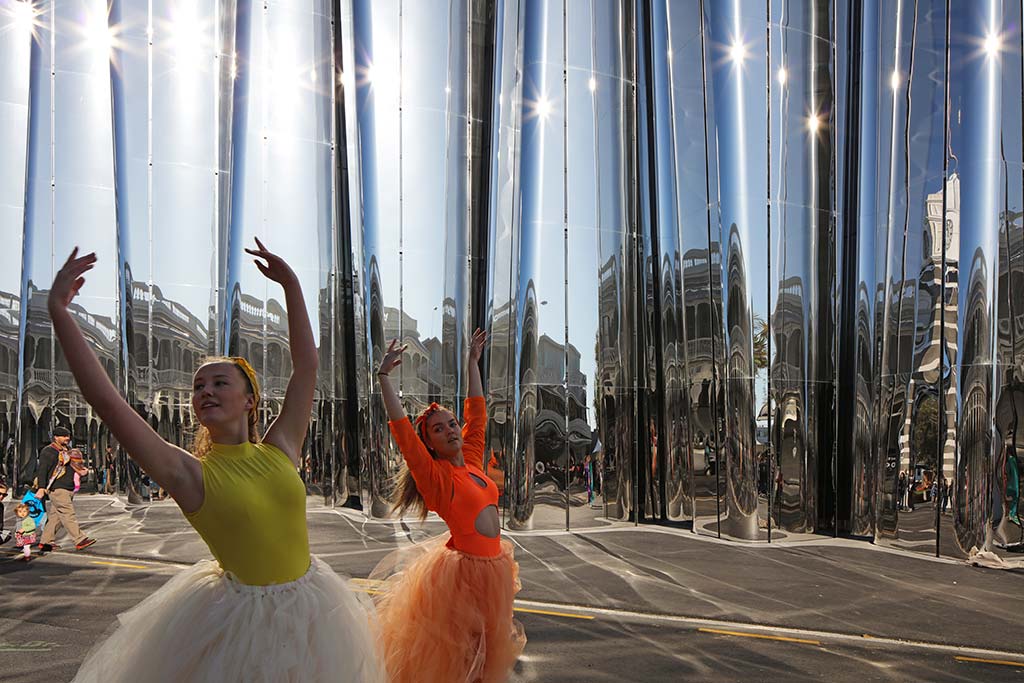
The building is obviously static, yet the pictures you see reflected in its stainless steel façade are created by chance, and no two views of the edifice will be the same. This ever-changing world makes multiples and halves of the immediate built environment and invites a huge level of interaction from those outside the building. It is a new playground for children and for adults who get to see themselves and the world anew, and laugh, for photographers who wander its perimeter and enjoy the infallibility of the building to provide a great image, and even for the uninterested and the distracted, who cannot help but notice themselves, made strange, and the pass by. All are ensnared by Len Lye.
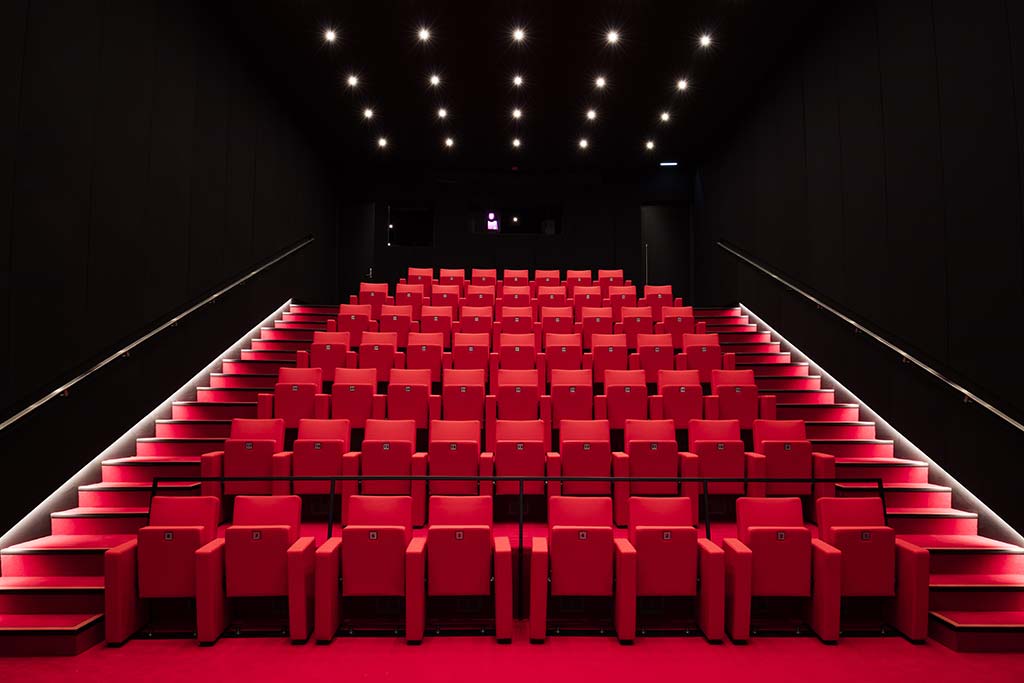
“We hope the design helps to challenge the dominance of Modernism in contemporary thought. It seeks to replace ‘architectural language’ with genuine meaning, create cogent space that is more lucid, triumphant and celebrating than Bauhaus traditions, as well as being more abstract and free flowing than axis generated architecture.” – Andrew Patterson.
“Len Lye would be dancing through the halls.” – John Matthews, Chairman of the Len Lye Foundation.


